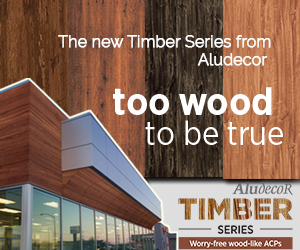The origin of the city of Kolkata dates back to 1686 when Job Charnock, the administrator of East India Company (believed to be the Founder of Kolkata) chose Sutanati Village to establish a factory. It became the centre of trade and commerce on the eastern banks of River Hooghly. There were a total of three villages – Sutanati, Gobindapur, and Kalikata, which later formed into one after the aggressive colonial invasion. It is said that the Battle of Plassey was the turning point for the growth of Calcutta.
Kolkata started growing rapidly since the 9th century. The ruling Britishers felt that Dalhousie Square(at present) area, in the middle of the city, was apt for development and hence shifted the existing settlement towards the northern part of the city. The original layout of Kolkata was a hindrance to structural development. The growth possibilities were only from east to south as west had the water bodies and rivers. Besides, the North Kolkata was already crowded. Considering all the factors, the first structure the British rulers started building were tanks as the city had drainage issues.
After 1770, the building style first adopted in Kolkata was the Baroque Neo-Classical style that we could notice inGovernment House in Old Forttill date. It took four years to complete the building. The colonial rulers attempted to create grandeur with stone.


The Council Housepresented the Tuscan Doric and Ionic orders. This style had well-ventilated buildings with multiple openings on the walls and a colossal verandah to the south. The Colonial rulers established this style for the first time. The concept of façade – a triangular-shaped structure placed above the horizontal system supported by pillars, was designed and executed. This façade style was the most predominant one used across most of the colonial buildings in the city.
Read also: The Space Story – Stellar Complex in Ahmedabad Beautified with Aludecor Metal Composite Panels


Urbanization started to take over, and soon another prominent architectural style came up in 1787 AD – theSt. John’s Church. Though prior that 1780 AD witnessed the development of one of the most famous architectures of Calcutta, which still stands magnificently strong. Designed by Thomas Lyon,The Writers Buildingis one of the iconic buildings in the country! The repetitive layout of similar rooms and paired windows conveyed the look of a “civil Barrack” with ionic columns. The long verandas in British architecture denoted that the solemn judgements and decisions were taken while taking that long walk on them.
Another architectural style that came up in Calcutta, facing the river Hooghly, with a facade replicating the Athenian Temple of Minerva, was theDoric Silver Mint (Old Silver Mint),which first started manufacturing silver and gold coins known as Siccas and Asrafis. With this structure, the Greek Revival took place in Kolkata.


1803 witnessed the architecture of the Governor House by architect Captain Charles Wyatt. It had curving corridors, prominent central block along with a Corinthian Portico inspired by the Kedleston Hall at Derbyshire. A unique feature of the Governor’s House was the multiple punctures at various parts of the building to circulate the maximum amount of wind through the building. Architect John Garstin built theTown Hallin Palladian style in 1809 AD. Soon after that, the Gothic Revival architectures stepped in, which was most predominant only in Britain compared to the other countries across Europe.


Britain created its permanent stamp in Calcutta by designing the centre of the highest order –The High Court. A vast, majestic structure with extensive use of stone was a replica of the Ypres Cloth Hall (Town Hall) in Belgium. With prominently pointed, intricately designed towers, The High Court had supremacy written all over it. During that time, Dalhousie Square and Esplanade West also got dramatically altered.
Read also: The Space Story: Palm Mall at Korba Looks Ethereal with Aludecor ACP Sheets
Soon British architecture became synonymous with the spread of Colonial power. The British Raj wanted to create an amalgamation of all prominent European structures to make Calcutta their new administrative centre. Retaining the architectural flavour of their continent, they wanted to feel at home while roaming around this newly recreated city!


Another noticeable architectural marvel across Europe were the Memorials to the dead monarchs and their queens. Thus began the construction of the Victoria Memorial, the most magnificent symbol of the British Empire in the world. George Nathanial Curzon, popularly known as Lord Curzon, 1st Marquess Curzon of Kedleston, commissioned and ordered in 1906 to architect William Emerson, who was the president of Royal Institute of British Architects, to create the memorial. The main intention of Curzon’s brainchild Victoria Memorial was born to rival the grandeur of The Taj and mark 300 years of Britsh Raj in India. It was built in the same white Makrana marble as The Taj. Much to a lot of confusion regarding the architectural style of Victoria Memorial, it is not a part of the Victorian Architecture, but of Indo Saracenic revivalist style that is a synthesis of British and Mughal foundations with influences of Islamic, Deccani, Venetian and Egyptian flair. At the entrance of the memorial, Lord Curzon’s statue still stands resilient to time, a magnanimous statuette of Queen Victoria seated on her throne greets every visitor at the entrance garden and her second statue is inside the main hall in all grandeur. Octagonal domed chattris, high portals and corner towers rule the structure. The central dome is mounted with a 5-metre tall bronze revolving statue of Angel of Victory to symbolize the Colonial power.
A radical change in the sense of style, taste and pattern emerged across Calcutta and the whole country from Bombay to Madras. The Indian traditional style soon fused with the European grandeur. After the exit of the British rule from India in 1947, many prominent buildings and structures emerged but “Calcutta Architecture” still reflects magnanimous structures built by the Colonials, which created the framework of the city and still stands strong to give today’s Kolkata its modern-vintage identity.



